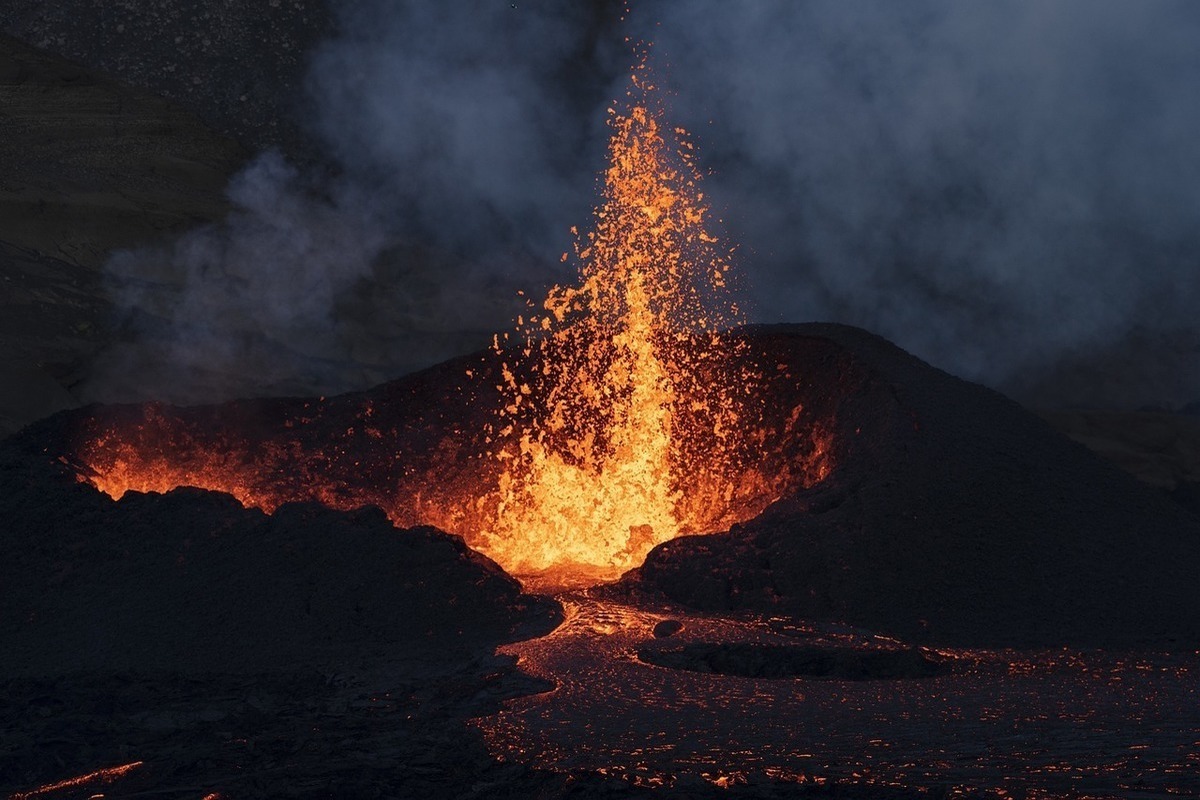The goal of the planned journey to the center of the Earth has been announced: the release of unlimited energy
[ad_1]

The journey to the center of the Earth was launched by scientists who harbor ambitious plans to drill a tunnel into the magma chamber of a volcano – they say this could release unlimited energy. The project at the Krafla volcano in northeast Iceland will allow access to the magma chamber.
It may sound like the start of a disaster movie, but Iceland could make scientific history by becoming the first country to drill into a volcano’s magma chamber, reports the Daily Mail.
In 2026, Iceland’s Krafla Magma Testbed (KMT) project will drill into a magma chamber on the Krafla volcano in the northeast of the country. The chamber, which lies one to two miles below the surface, will release unlimited geothermal energy to power Iceland’s homes and buildings.
Despite the magma’s extreme temperatures – up to 2,372°F (1,300°C) – experts insist it is safe and will not cause another catastrophic volcanic eruption in the country.
“This is the first journey to the center of the Earth,” said project leader Björn Thor Gudmundsson.
Iceland already uses geothermal energy – heat generated inside the Earth – to power its turbines and generate electricity, the Daily Mail notes. Icelandic geothermal power plants drill wells more than a mile deep to extract hot water vapor, which is separated into liquid water and steam in so-called separators. The steam is then forced through turbines, which spin to generate electricity, but this only consumes a fraction of the available energy. Moreover, geothermal energy is relatively cold compared to steam from fossil fuel power plants – around 250°C and 450°C respectively.
“At these low temperatures it’s pretty inefficient, so there’s interest in trying to develop super-hot geothermal vents,” John Eichelberger, a volcanologist at the University of Alaska Fairbanks, told New Scientist.
Instead, using higher temperatures in the magma chamber could result in a more powerful energy supply.
“The goal of extracting energy from super-hot geothermal vents close to magma is that these wells are orders of magnitude more powerful in terms of energy production than conventional wells,” Gudmundsson told MailOnline. “We can drill one well instead of 10 at that time.” same power.”
Krafla, one of the most active volcanoes in the world, erupted nine times between 1975 and 1984 (the year of its last eruption). At that time, scientists were able to pinpoint the location of the Krafla magma chamber beneath the caldera using seismometers—at about a depth of 1.2 miles (2 km). Since the late 1970s, Krafla has had a geothermal power plant operated by Landsvirkjun, Iceland’s main energy company. There are 33 wells that tap geothermal energy at the site, but none of them go down into the magma chamber itself.
Drilling to chamber depth is not a problem as other companies around the world are trying to drill much longer wells. Rather, the problem is what happens to the drilling equipment when it reaches the magma chamber, the Daily Mail emphasizes.
In 2009, as part of a deep drilling project in Iceland, experts inadvertently drilled into a magma reservoir in Krafla. But drilling had to be stopped after it reached a depth of 6,890 feet (2,100 meters) when the drill encountered magma and corroded the steel in the well casing.
The episode proved to experts that drilling into magma is safe without causing an eruption, and is possible with the right tools.
“One of KMT’s main goals is to develop wells using the right materials that can withstand these conditions,” Gudmundsson told MailOnline.
In 2026, the KMT project will begin drilling near this initial well as the journey to the chamber begins, but this could take two months.
If successful, scientists also want to add sensors to the magma chamber to take pressure readings, which could improve eruption forecasts.
However, this will require developing sensors that can withstand the intense heat, pressure and acidity of the magma.
Other experiments done later in the decade might involve introducing liquids into a chamber to change pressure and temperature and measuring the results. The findings may apply to other active volcanoes around the world, including the Italian “supervolcano” Campi Flegrei. Near Naples, in southern Italy, Campi Flegrei has become weaker and more prone to collapse, increasing the likelihood of an eruption, a study last year found.
[ad_2]
Source link








